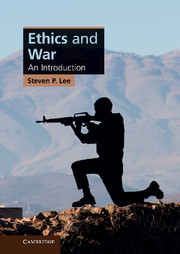Book contents
- Frontmatter
- Contents
- Figures and tables
- Preface
- 1 Understanding war in moral terms
- 2 The just war tradition: a brief history
- 3 When is it just to go to war?
- 4 Sovereignty and human rights
- 5 How should war be fought? Part one
- 6 How should war be fought? Part two
- 7 Civil wars
- 8 Justice at the end of war
- Bibliography
- Index
- References
6 - How should war be fought? Part two
Published online by Cambridge University Press: 05 June 2012
- Frontmatter
- Contents
- Figures and tables
- Preface
- 1 Understanding war in moral terms
- 2 The just war tradition: a brief history
- 3 When is it just to go to war?
- 4 Sovereignty and human rights
- 5 How should war be fought? Part one
- 6 How should war be fought? Part two
- 7 Civil wars
- 8 Justice at the end of war
- Bibliography
- Index
- References
Summary
We are not only fighting hostile armies, but a hostile people, and must make old and young, rich and poor, feel the hard hand of war, as well as their organized armies.
General William T. ShermanThe world will note that the first atomic bomb was dropped on Hiroshima, a military base. That was because we wished in this first attack to avoid, insofar as possible, the killing of civilians.
President Harry S. TrumanIn my judgment, this new paradigm renders obsolete Geneva’s strict limitations on questioning of enemy prisoners.
Alberto Gonzales, White House CounselThe chapter continues our discussion of jus in bello. We begin by completing the discussion from the last chapter about the justification of the in bello principle of combatant liability, the principle that in war all combatants, just and unjust, are liable to attack by enemy combatants. The United States policy of torturing terrorist suspects, referred to by Alberto Gonzales in the above quotation, figures into this discussion. Then we examine the other main in bello criteria, proportionality and due care, and later discuss terrorism and in bello restraints on weapons in war. We open the chapter with a discussion of an event and a policy that challenge our understanding of jus in bello in the new century.
Terrorism and torture
On the morning of September 11, 2001, two commercial airliners flew into the twin towers of the World Trade Center in New York, setting them ablaze with thousands of gallons of jet fuel; ninety minutes later the two buildings collapsed. A third plane crashed into the Pentagon in Washington, DC, and a fourth, intended for another target in Washington, crashed into a field in Western Pennsylvania. Altogether almost 3,000 people, the great majority of them civilians, were murdered in the buildings and on the planes. This was an attack undertaken by members of the terrorist group al-Qaeda. The planes had been commandeered by the terrorists and deliberately flown into the buildings. The United States was in a state of shock.
- Type
- Chapter
- Information
- Ethics and WarAn Introduction, pp. 200 - 239Publisher: Cambridge University PressPrint publication year: 2011



